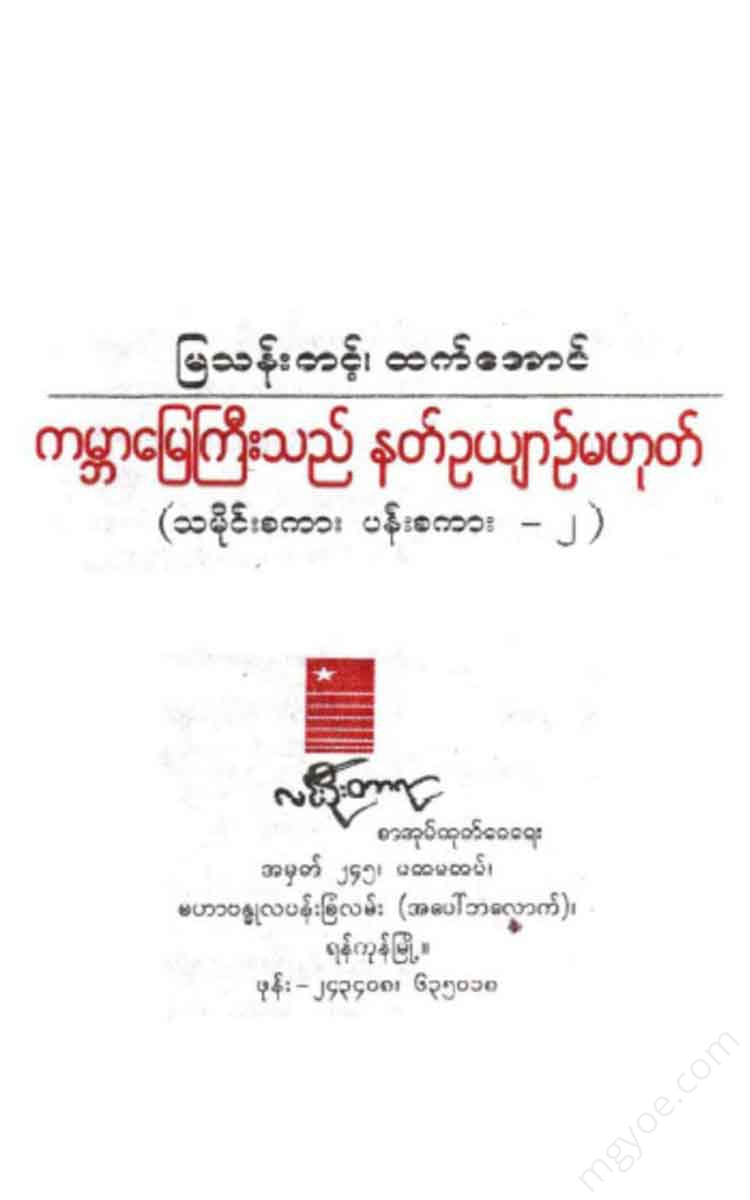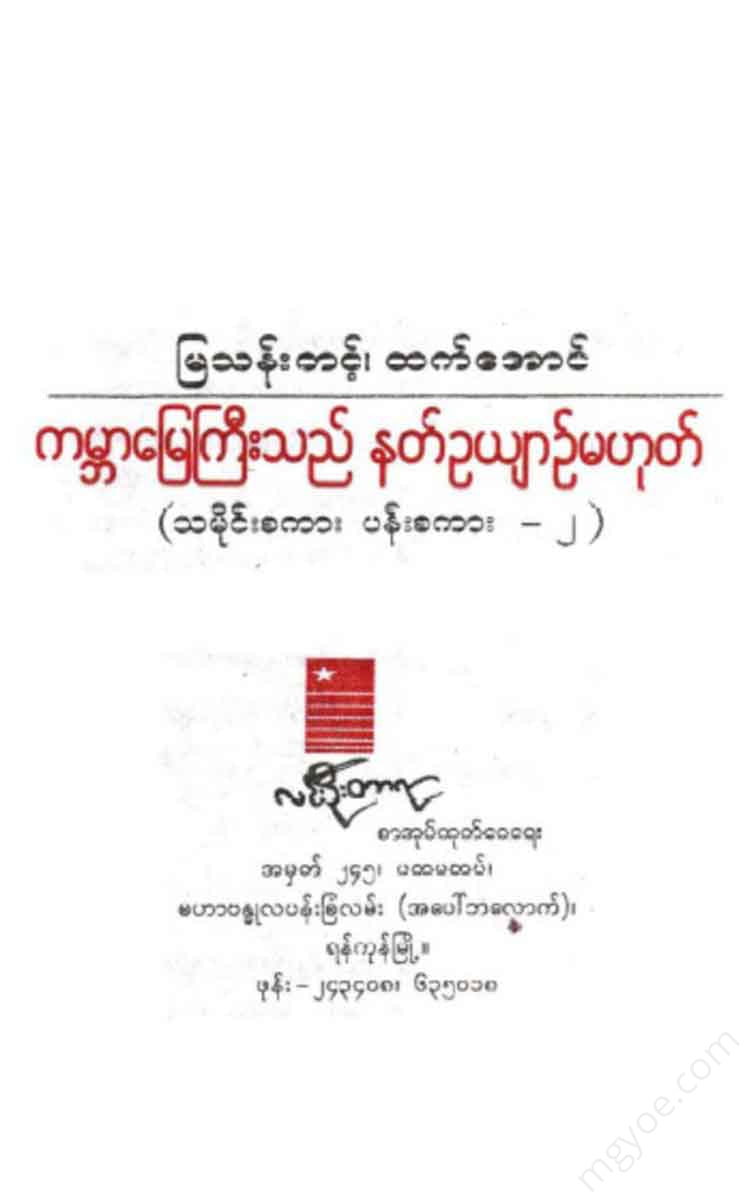Other Websites
Mya Than Tint - The Earth is not a garden of gods
Mya Than Tint - The Earth is not a garden of gods
Couldn't load pickup availability
Great cafes in Paris
One spring evening, when we were in Paris, after we had just gotten married, we were walking along the Rue Saint-Sulsay, looking in awe. We passed a large fountain, surrounded by four stone archbishops. We sat down at the Café de la Mer and ordered a bottle of champagne. Now, forty years later, it was a good time to visit the cafés where we had sat as children. (Is there still a good time to come to Paris?)
In fact, sitting in a café allows you to reflect on your own past. Not only that, but you can also reflect on the past of Paris. Both (leaders of the French Revolution) Rosamond Pierre and Lenin wrote their novels in Parisian cafés. According to historian Roger Schechter, Impressionism was “the first artistic movement to emerge in cafés. Parisian cafés were not just places to eat and drink. They were also places to meet friends and chat. They were also places to work and trade. They were also places to read the newspaper and observe the whole of life passing by.
This grand café system dates back to the 17th century, when coffee, a favorite of Arabs, began to spread to Europe. The oldest | longest-running café in Paris is the Proco Café, opened in 1686 on the rue de la Comédie. When Benjamin Franklin and Voltaire came to sit down, the Proco Café was already a century old. After them came the revolutionaries. Among them were Rosemary, Danton, Marat, and even Napoleon.
In 1988, the Proco Café was completely renovated. The Pompeian red walls, 18th-century oval portraits, crystal chandeliers, and glass chandeliers have been updated, and the waiters are dressed in revolutionary uniforms. There's even a piano that rings like a bell. All of this is old-fashioned, even Napoleon's, but the food is still very good. The fried oysters are divine.
The cafes in Mon Mart, where the famous painter Kyaw More and the elephant often met, have also become shops, stores, and car showrooms.
But the artists' oasis on the left bank of the Seine still exists. The Montparnasse district was at its peak in the 1920s. At that time, Hemingway would sit and write his novels at the Clos-Sorres Lalique Café. The café was a 17th-century café surrounded by linden trees. Hemingway once complained in frustration when the barkeepers , in an attempt to attract a younger crowd, decided to make the bar bar bar and the waiters not have to wear moustaches.
The Closerie Café is once again in a state of near-closing. Like the red carpets that grace the café, Hemingway is also a fixture of the café. A brass plaque commemorates the spot where he sat at the bar, and his portrait is on the café's menu. The menu includes a dish that Hemingway often ate, and it is called the Hemingway Mustard.
After World War II, the Montparnasse district almost disappeared. However, in the 1970s and 1980s, the café industry revived and it has since become somewhat popular. Former customers still lament the fate of the Café Capoley , a barn-like building that was once home to writers and poets such as Henry Millay, Lawrence Darrell, and Samuel Beckett. The café was bought by a large café company and demolished, before being replaced by a modern café in 1988. Even more unfortunate is that an inexperienced writer once wrote a story about Henry Tully, who sold a plate of French fries for about a dollar, and who, without any pretense of decor, The café was transformed in 1988. Part of the café has been converted into a very good fish restaurant. (Travel magazine Michelin has given it one star.) The grilled fish is very good. The macaroni is even better. But they don't have sausages like they used to. The price of sausages and the old days is a fairy tale. Dinner for two costs a hundred dollars.
“If you are lucky enough to live in Paris as a young man, Paris will be with you wherever you go throughout your life. Because Paris is a moving feast,” Hemingway once wrote. For me, the moving feast is at the crossroads outside the oldest and most enduring cathedral in Paris. That cathedral is the Basilica of Saint-Germain, built in the sixth century. During the Second French Empire, Count Haussmann cut a grand avenue here. There, as far as I can remember, three of the best cafes in Paris (and therefore the best in the world) sprang up. The first was the Café Floret (1965), known as the headquarters of existentialism. “That little café is like home to us,” Jean Paul Gaultier once said. Simone Duvet wrote part of his book “The Second Sex” in this little café. One good thing is that the Café Flori has a loft where you can work in peace. Another is that the Café Flori is always warm.
In 1870 , when Germany invaded the Second French Empire, many refugees from the Allies came to Paris. Among them was a man named Lennart Lipp. He opened a small café on the other side of the avenue opposite the Café Flori. His shop was decorated with green and blue birds from the tropical zone flying around. His shop was not as good as its reputation, according to true German sausage lovers. At any rate, according to a foreigner who had never tasted a real German sausage, it was well-deserved. Alsace was better. But the best was the beer, which came in large glasses, larger than a glass. First in a half-liter glass. Then in a three-liter glass. Finally in a large one-liter mug.
Another specialty of the café is politics. The French National Assembly building is just a short walk up the street from the café. Members of parliament regularly visit this café to fill their bellies, discuss matters and engage in intrigue. One of the café’s regulars in recent years has been the current French President, François Mitterrand. A café that can boast a president among its customers needs no introduction.
The grandest of the three great cafes, Margot's Cafe (1875) is the newest and most recent. It is also the most elegant and welcoming. While Lenap's Cafe asks what kind of person you are, Flori's Cafe asks how much you can spend, Judith's Cafe asks what kind of food you like.
The Jumeirah Marg Cafe is located opposite the cathedral. The strange name comes from the two large Chinese stone statues in the middle of the cafe. The prices are outrageous these days. A Coke costs five US dollars, a Bloody Mary costs ten dollars. But sitting on the east porch of the Jumeirah Marg Cafe on a spring evening, looking out over the blooming apple trees, the daisies, and the lily fields, and beyond the medieval cathedral, one can only wonder how much such a sight is worth.
Even in the 1940s, when prices were not as high as they are now, you could only go to cafes like Lip and Flores on special occasions. For a more leisurely stroll, there were cheaper cafes like Royale, Bonaparte, and Marbelon. Although the cafes of the Saint-Germain district were filled with the rich and successful, the center of the arts seemed to have moved back to the right bank of the Seine. It is not surprising that those who are old and nostalgic return to Paris to find that the cafes have changed. There are many reasons for this change. One of the reasons is that the cafes of Paris were popular in the old days because the lodgings and boarding houses were cold and dark. Another reason is that the big schools are so expensive that they prefer to study in cafes. Yet my 40th anniversary in Paris was held at the Café de la Marie. It is a café near the hotel where we are staying, even though the goldfish bowl and chess board that used to be there are no more. It is a place with a certain literary tradition. The writer Sabérou used to come to that café. William Faulkner also used to come and drink. The painter Jana Bane also came and painted a lot here. When I once asked the owner what she thought of the artist Bane, she said that she had never heard of his name.



